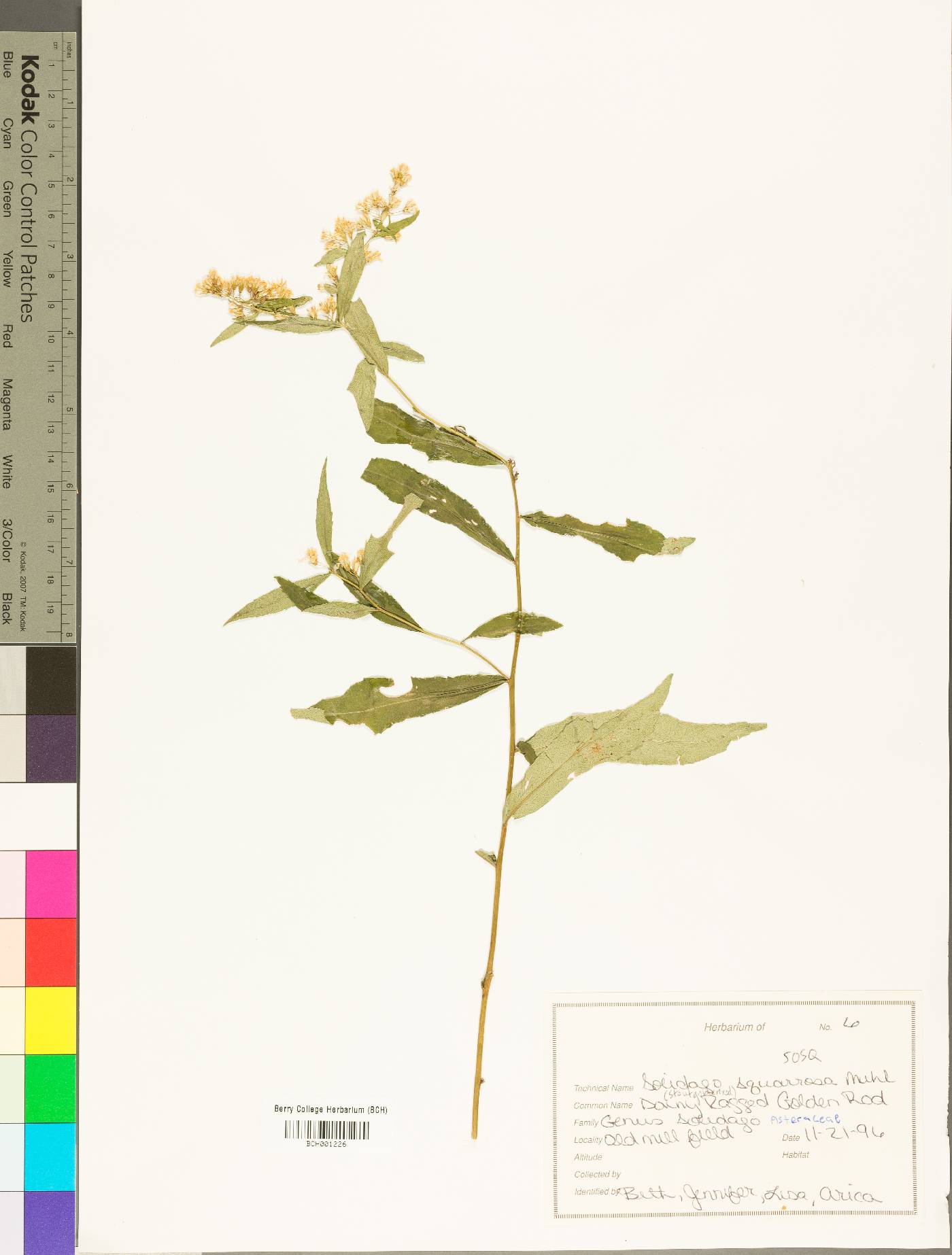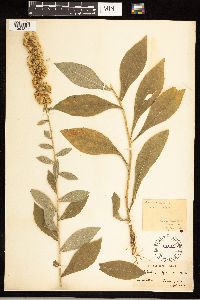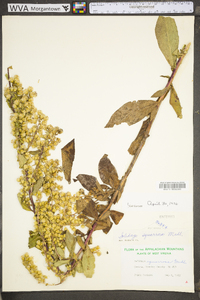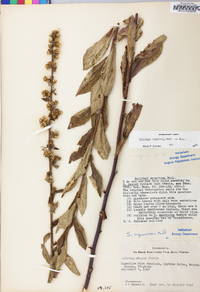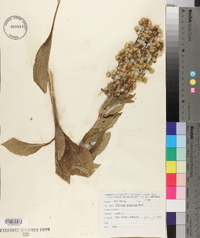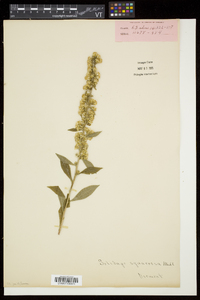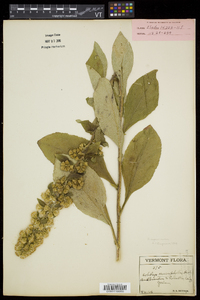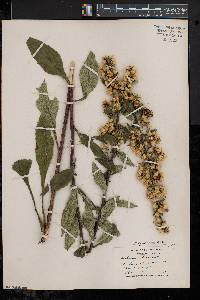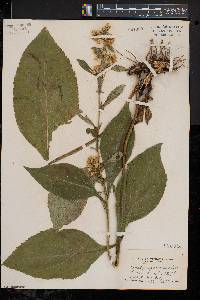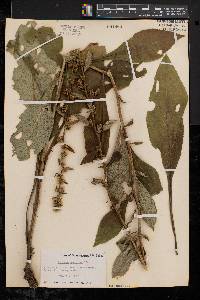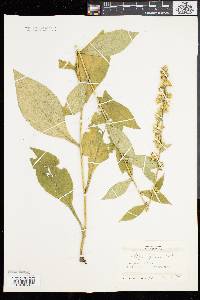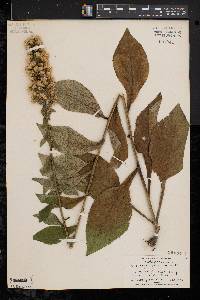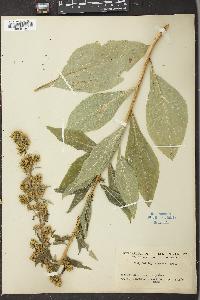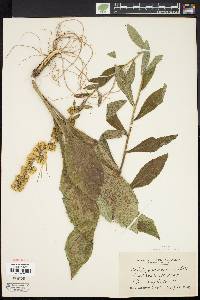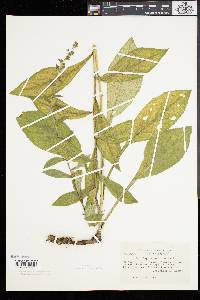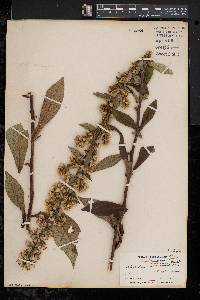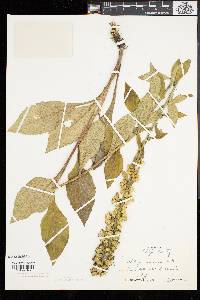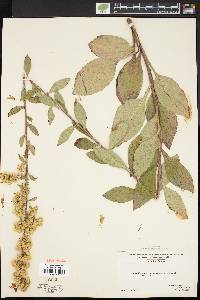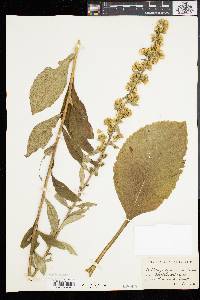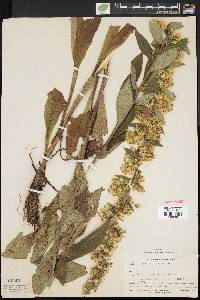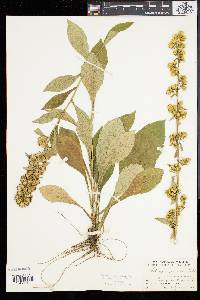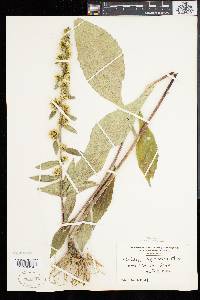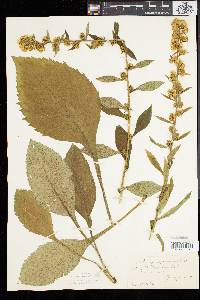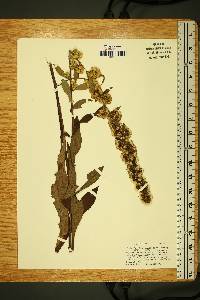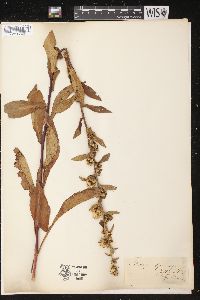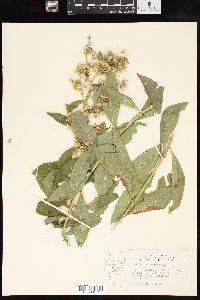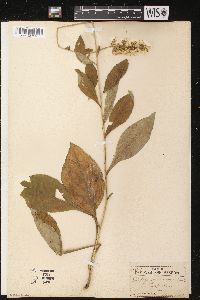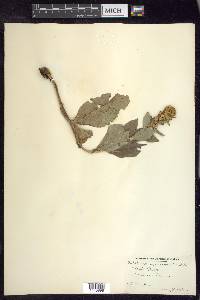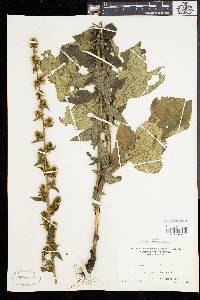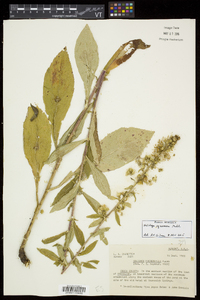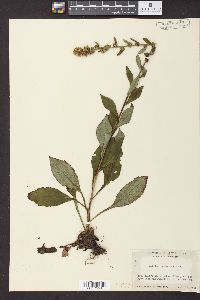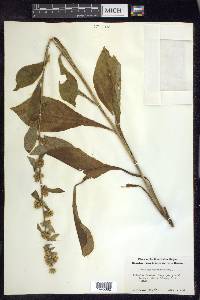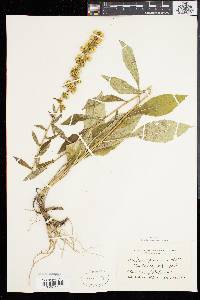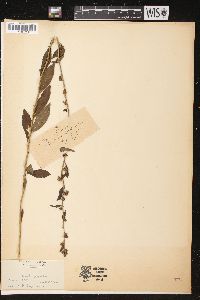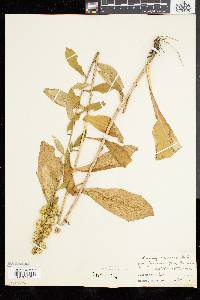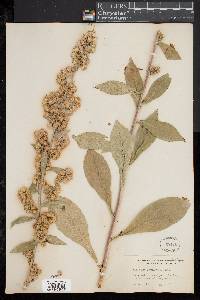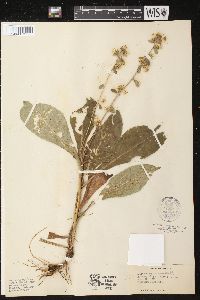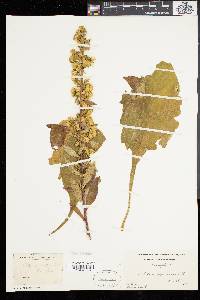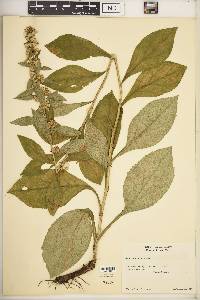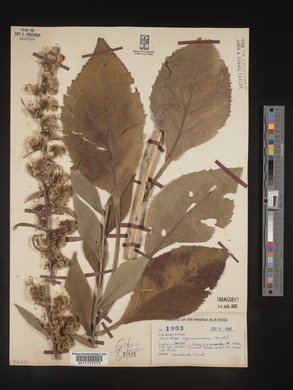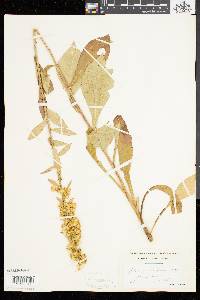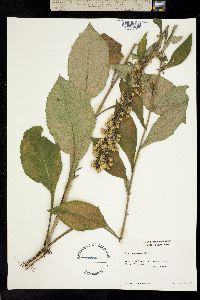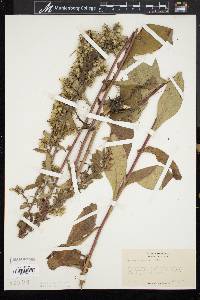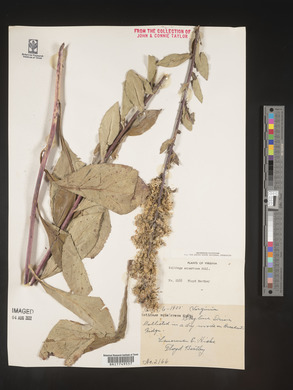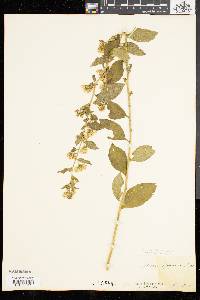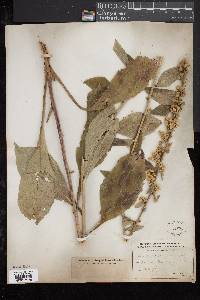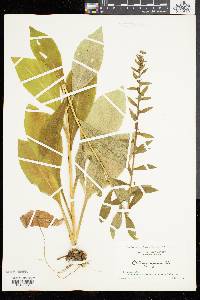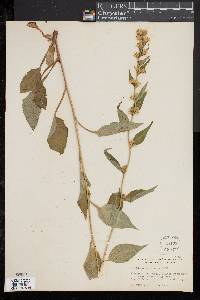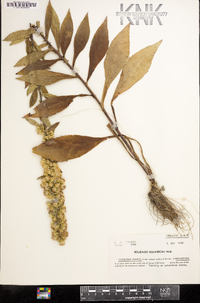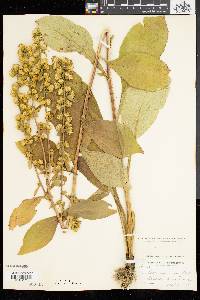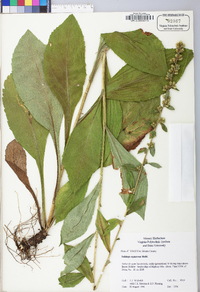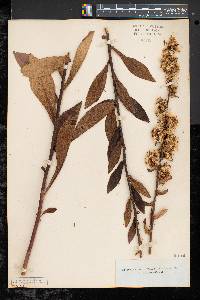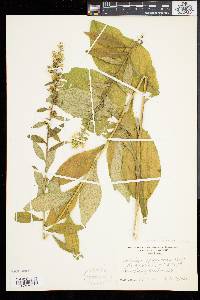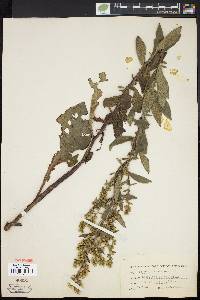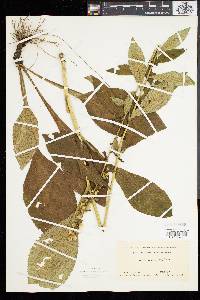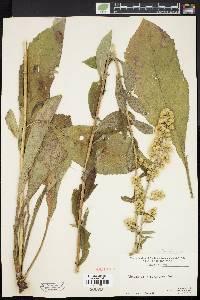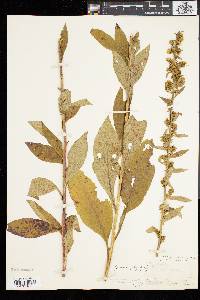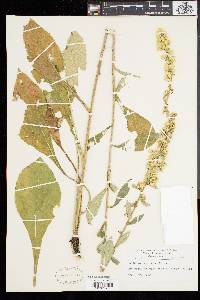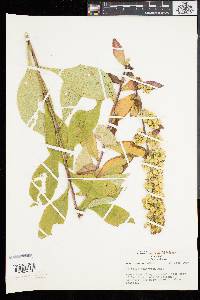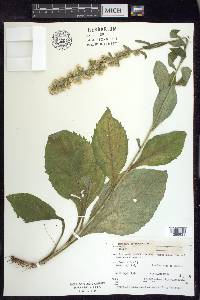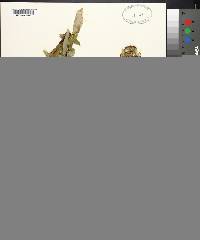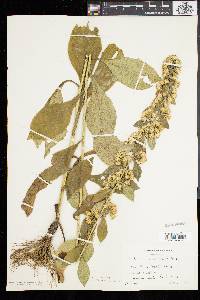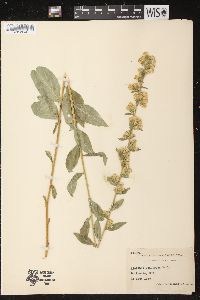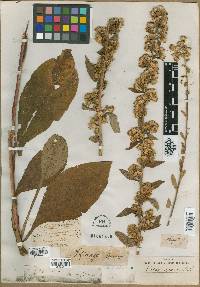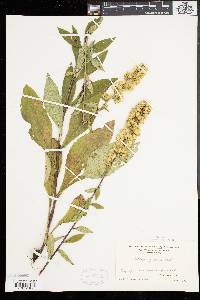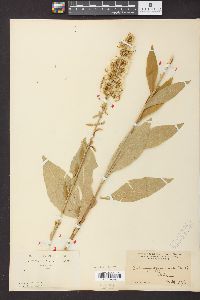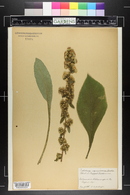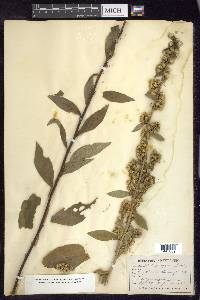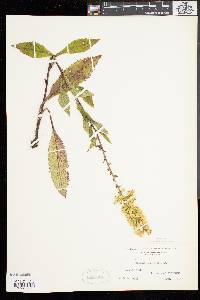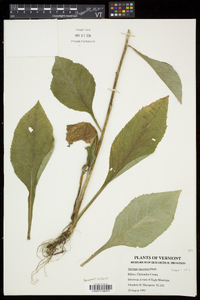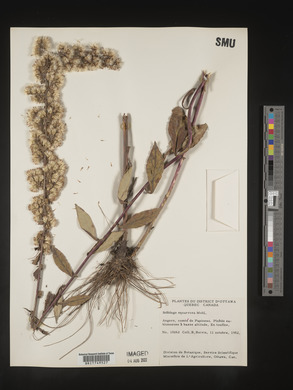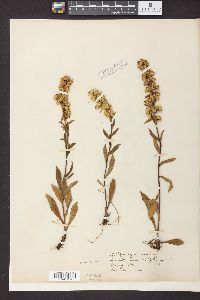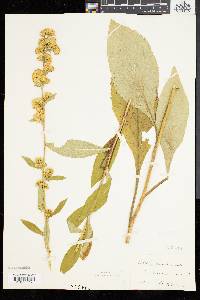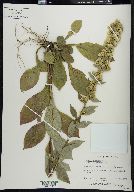
|
|
|
|
Family: Asteraceae
Stout Goldenrod
[Solidago squamosa] |
Plants 30-150 cm; caudices branching. Stems 1-5+, erect, glabrous proximal to arrays. Leaves: basal and proximal cauline tapering quickly to long, winged ciliate-margined petioles, blades ovate, 50-200 × 20-100 mm, margins serrate; mid to distal cauline sessile, blades oblanceolate, 30-100 × 8-35 mm, reduced distally and becoming lanceolate-ovate, margins entire, abaxially sparsely strigose along nerves. Heads 20-200, not secund, in narrow, elongate arrays of axillary and terminal racemiform clusters, branches and peduncles hairy, leafy-bracteate proximally. Peduncles 8-10 mm. Involucres 5-9 mm. Phyllaries (20-26) in 4-6 series, recurved, unequal, conspicuously spreading, lanceolate, margins ciliate, apices acute to obtuse, finely strigose. Ray florets 10-16; laminae 4-6.5 × 0.4-0.6 mm. Disc florets 15-30; corollas 5-5.6 mm, lobes 0.5-1.2 mm. Cypselae (obconic) 1.5-2 mm, glabrous; pappi 3-4.3 mm. 2n = 18. Flowering Aug-Sep. Dry woods, fields and rocky slopes; 0-1000+ m; N.B., Ont., Que.; Conn., Del., Ind., Ky., Maine, Mass., N.H., N.J., N.Y., N.C., Ohio, Pa., R.I., Vt., Va., W.Va. Stems 3-15 dm from a branched caudex, glabrous or nearly so below the rough-puberulent infl; lvs basally disposed, glabrous, or somewhat scabrous above, the larger ones with broadly oblanceolate to obovate, elliptic, or elliptic-ovate, sharply serrate blade mostly 5-20 נ2-10 cm, tapering or sometimes abruptly contracted to the long petiole; infl narrow and elongate, generally leafy-bracteate at least below; invol 5-9 mm, its bracts firm, at least the outer with squarrose, commonly herbaceous tip; rays 10-17, 3.5-5 mm; disk fls mostly 13-24; achenes glabrous, 3-3.5 mm; 2n=18. Rocky woods; N.B. to s. Ont., s. to O., s. Ind., and in the mts. to N.C. Gleason, Henry A. & Cronquist, Arthur J. 1991. Manual of vascular plants of northeastern United States and adjacent Canada. lxxv + 910 pp. ©The New York Botanical Garden. All rights reserved. Used by permission. From Flora of Indiana (1940) by Charles C. Deam In Indiana this goldenrod is known from only Clark and Floyd Counties. It is frequent in the Clark County State Forest about 3 miles northwest of Henryville on the south side of a deep hollow just north of the fire tower. This wooded hollow is probably 150 feet deep and the goldenrod is found here and there from the top to the bottom of the slope facing north. At the top of the slope it is associated with Pinus virginiana, Quercus montana, Quercus velutina, and Vaccinium. There is a specimen in the herbarium of Purdue University collected by A. Clapp in 183? in the "barrens"'(probably in Floyd County). …… Indiana Coefficient of Conservatism: C = 10 Wetland Indicator Status: N/A |
This project was made possible in part by the Institute of Museum and Library Services [MG-70-19-0057-19].
Powered by Symbiota

